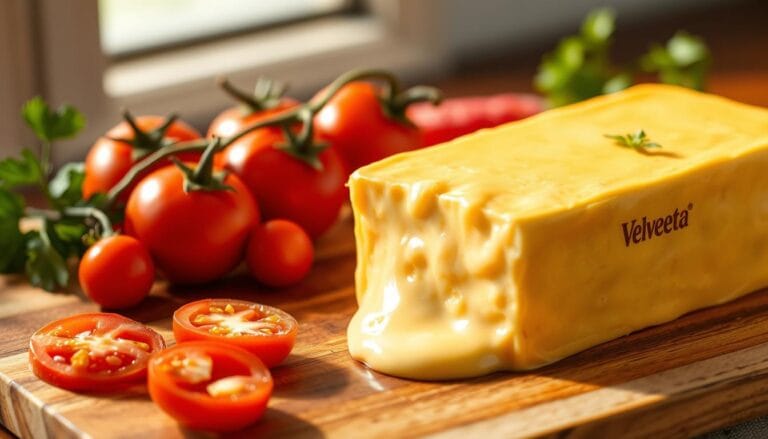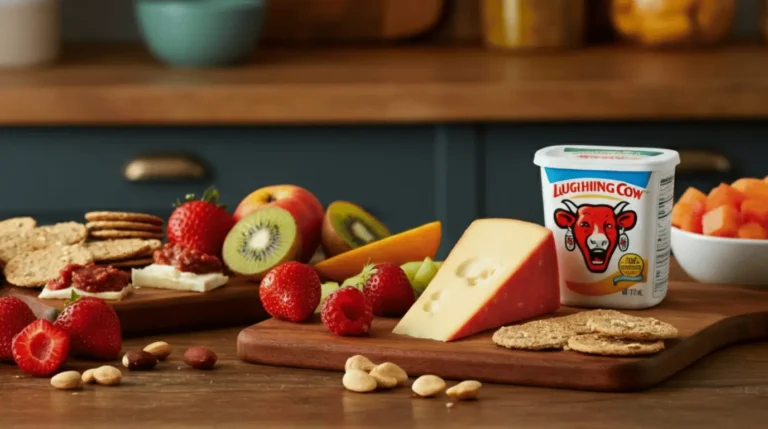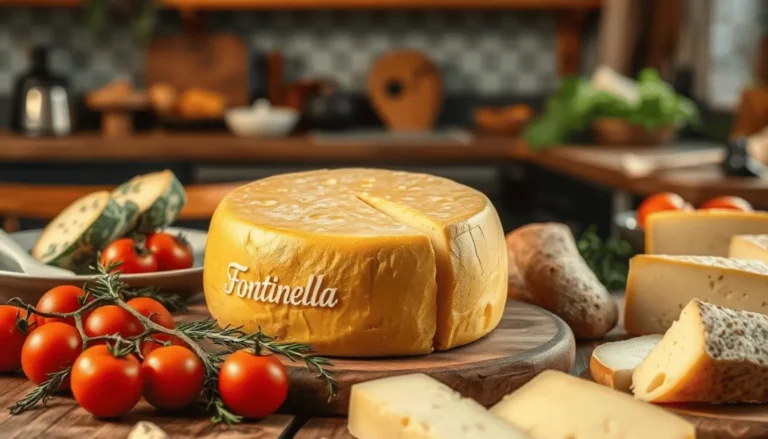Discovering Poval Cheese: A Taste of Tradition and Flavorful Delicacy
Poval cheese can be described as an artisanal cheese that is gaining acceptance among cheese lovers for its rich and varied history, unique flavor, and flexibility when it comes to cooking. It is renowned for its creamy, smooth texture and rich flavor.
Poval hails from the natural countryside of an area that is steeped in cheese-making history. In this article, we’ll explore the things that make Poval cheese unique, starting from its genesis and traditional methods of making it to its culinary applications and the health benefits.
No matter if you’re a snob about cheese or are just trying something different, poval cheese is a delicious ingredient to have in your kitchen.
Table of Contents
Origins of Poval Cheese
The origins of Poval cheese go back to a small mountainous region in which local cheesemakers have perfected their art for many generations.
It is passed down through families. The methods and recipes employed to create Poval are a strong relationship to the land and an enduring commitment to the preservation of traditions. It is produced from high-quality, locally sourced milk, usually from sheep or cows who graze upon native grasses and plants and herbs, giving Poval its distinct, nuanced taste.
The cheese is traditionally made in small quantities, with each wheel bearing the distinctive signature of the area in which it was made.
Flavor and Texture of Poval Cheese
Poval cheese provides a unique tasting experience. Its distinctive flavor is very earthy but also slightly angy. It strikes an incredibly delicate balance between softness and depth. In its earliest stages, poval is creamy and delicate, with hints of grassy and floral notes.
As it matures, it develops a more robust, sharper flavor with a slight crunch and a slight nuttiness, which makes it a favorite among people who enjoy semi-hard and soft cheeses.
Its texture is generally soft and supple, which makes it perfect to slice and melt; however, it maintains an incredibly creamy and buttery taste that is deliciously melt-in-your-mouth.

The Art of Traditional Poval Cheesemaking
Poval cheese is produced by using traditional methods that emphasize the flavor and quality. The process starts with raw, unpasteurized milk that is often taken just hours before cheesemaking to ensure the freshness of the cheese.
The milk is heated carefully before natural rennet is then added to help curdle it. After the curds are cut and stirred gently, after which they’re drained, they’re placed in molds, and then pressing them to get rid of any excess moisture. Aging is an essential process, and Poval is usually aged in cellars that are cool and humid for a period of anywhere from a couple of weeks to a couple of months, based on the desired level of flavor.
The process of aging slowly allows it to gain its distinct taste and transform the milk fresh into a rich and aromatic pleasure.
What Makes Poval Cheese Unique?
Poval cheese is distinguished not just because of its traditional manufacturing methods, but it also has a versatile flavor and its versatility in the kitchen. Its unique blend of earthy undertones and a sweet, nutty flavor makes it a standout selection in the field of artisanal cheeses.
The high quality of the milk that is used—often specifically derived from breeds of sheep that are raised in grazing areas of the highest quality—is what sets Poval apart from hers. Furthermore, the small batch production and aging process enhance its authenticity, as does the fact that each wheel has a distinctive taste.
Culinary Uses and Pairings for Poval Cheese
Poval cheese is a star in a range of culinary uses, such as cheese boards and warm meals. Here are a few of the most well-known recipes and pairings that will inspire your next dinner:
- wine pairings Poval’s light tanginess works well with light-bodied white wines such as Sauvignon Blanc or Chardonnay that complement its smooth texture and gentle earthiness. If you’re looking for a red, you can try the Pinot Noir for a perfect balance.
- Fruit pairings Fruits that are fresh, like figs, pears, and apples, bring out the earthy flavors of Poval and highlight its inherent sweetness. The fresh acidity of apples is a good example, as it balances the creamy texture of the cheese, while figs bring a distinct sweetness that resembles honey.
- Food Pairings Poval is an ingredient that can be used in a variety of ways to use in cooking. It can be melted over flatbreads, sprinkled on salads to give it a smooth texture, or mixed with the pasta dish to give an elegant finishing. It’s also an excellent option for charcuterie boards, serving as a delicious alternative to cured nuts and cured meat.

Nutritional Benefits of Poval Cheese
Poval cheese is high in calcium and protein and calcium, making it a healthy option for those who love cheese.
Probiotics and beneficial fats from aging processes It can help support digestion health when consumed in moderate amounts. A moderate level of fat as well as significant levels of vital vitamins, like B12 and A, make it a nutritious supplement to an energizing diet.
Where to Find Authentic Poval Cheese
Locating authentic Poval cheese is an exciting adventure. Search for cheese shops that specialize in this kind of product or online retailers who source directly from artisans.
A lot of farmers’ markets have locally produced or imported poval and often offer samples to help you select the best piece. Certain gourmet stores might have Poval in particular in the case of a section for cheeses that are the artisanal and imported varieties.
Tips for incorporating Poval Cheese in Everyday Meals
Add Poval cheese to your daily food and turn simple dishes into gourmet delights. Here are some suggestions:
- Grilled Cheese Upgrade Switch in slices of Poval to get a smooth, rich, and delicious take on the grilled cheese sandwich that is so popular.
- Pasta Perfection Shave or cut Poval over pasta to add an extra sweet, tangy, and nutty flavor. It is a perfect fit into sauces.
- Delicious Breakfasts Try poval in eggs scrambled or in omelets to get soft texture and a subtle flavor that goes well with fresh herbs and veggies.
- A simple snack Cut Poval and serve it with bread or crackers for a quick, delicious snack.
Conclusion
Poval cheese is a distinct taste and texture that is built on tradition and made with great care. Its versatility makes it a great option to pair with fruit, wines, and main meals, as well as its nutritional advantages, which add flavor to any food.
If you’re new to gourmet cheeses or an experienced cheese enthusiast, the addition of Poval to your selection is certain to delight your palate and enrich your cooking. Look for it in specialty stores or online and discover the numerous ways Poval will add an extra dimension and flavor to your dishes.
1. What is Poval cheese?
Poval cheese is a semi-soft, creamy cheese known for its smooth texture and mild, nutty flavor. It’s often enjoyed on cheese boards, in sandwiches, or melted into various dishes.
2. Where does Poval cheese originate?
Poval cheese originates from [insert region or country if known], where it’s traditionally crafted using high-quality milk. It is a popular choice in both local and international cheese selections due to its versatile flavor profile.
3. What does Poval cheese taste like?
Poval cheese is made through a careful process of curdling and aging milk, usually from cows, to achieve its unique texture and flavor. The cheese is aged for a short period, allowing it to develop a soft, smooth texture.
4. How is Poval cheese made?
Poval cheese is made through a careful process of curdling and aging milk, usually from cows, to achieve its unique texture and flavor. The cheese is aged for a short period, allowing it to develop a soft, smooth texture.
5. Is Poval cheese similar to any other types of cheese?
Yes, Poval cheese is often compared to cheeses like Gouda or Fontina due to its creamy, semi-soft texture and mild flavor. However, it has its own unique taste that sets it apart.
6. How can I use Poval cheese in cooking?
Poval cheese is versatile in cooking. It’s excellent for melting into sauces, adding to pasta dishes, or using as a topping on pizzas and casseroles. Its mild flavor also works well in quiches and grilled sandwiches.
7. What beverages pair well with Poval cheese?
Poval cheese pairs beautifully with light to medium-bodied white wines, such as Sauvignon Blanc or Chardonnay, and mild red wines like Pinot Noir. For non-alcoholic options, try pairing it with sparkling water or apple cider.







